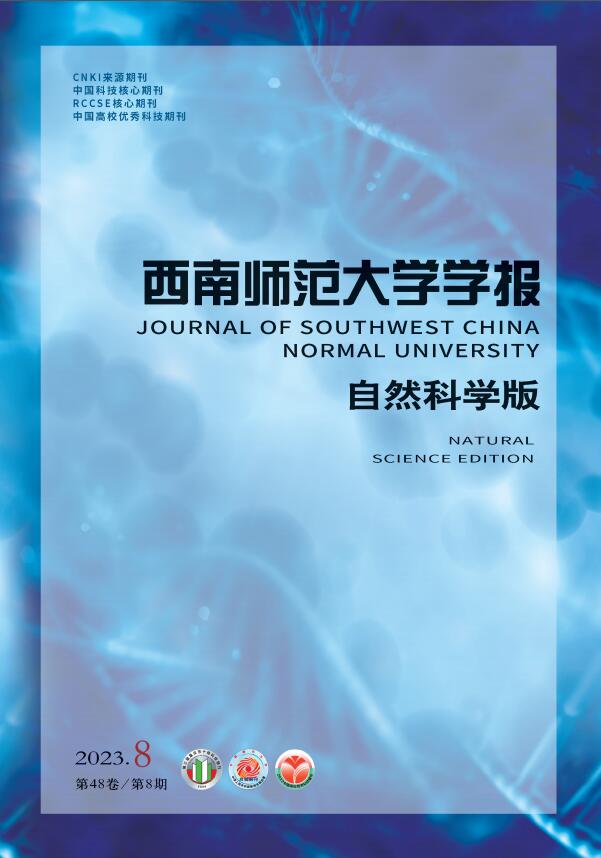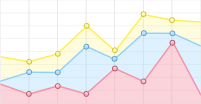-
Phantom态射起源于代数拓扑CW-复形之间的映射[1]. 文献[2]首次定义了三角范畴上的Phantom态射. 在文献[3-6]中,Phantom态射的理论在有限群环的稳定模范畴中得到了发展. 文献[7]利用有限表示模和Tor1R(-,-)将Phantom态射的概念推广到了任意环的模范畴上. 文献[8]引入了n-Phantom态射和n-Ext-Phantom态射的概念,证明了:在R-Mod中,f:M→N是n-Phantom态射(n>1)当且仅当存在态射范畴中的正合序列0→kn-1→pn-2→pn-1→…→p0→f→0,其中pi是投射的,kn-1是Phantom态射. 文献[9]定义了Gorenstein平坦Phantom态射和高维Gorenstein平坦Phantom态射,并研究了其同调性质,证明了:R-模态射φ:X→X′是高维Gorenstein平坦Phantom态射当且仅当在态射范畴中存在φ的Gorenstein平坦分解,使得它的n次合冲是Gorenstein平坦Phantom态射. 与其相关的研究课题还得到了许多其他有意义的结论(参见文献[10-11]).
受以上结论的启发,本文主要研究Gorenstein内射Phantom态射.
HTML
-
本文中所提到的环均指有单位元的结合环,模均指左R-模. R-Mod(Mod-R)表示左(右)R-模范畴.
定义1 用H(R)表示R-Mod的态射范畴,其中:
(a) H(R)中的对象是左R-模同态;
(b) H(R)中从
$ (A\xrightarrow{{{f}_{1}}}B)$ 到$ (A^{\prime} \text{ }\xrightarrow{{{f}_{2}}}B^{\prime} )$ 的态射为R-Mod中态射的对子(g1,g2)使得图
交换.
由文献[12]可得,态射范畴H(R)是局部有限表示的Grothendieck范畴.
-
文献[13]在一般环上引入了Gorenstein内射模的概念.
定义2[13] 如果存在内射模的正合列…→I1→I0→I0→I1→…,使得M
$ \cong $ Ker(I0→I0),且对任意的内射模I,该序列在函子HomR(I,-)作用下仍是正合的,则称R-模M是Gorenstein内射模.Gorenstein内射模的类记为ΓI.
由此我们引入Gorenstein内射Phantom态射的概念.
定义3 如果对任意的内射左R-模E,ExtR1(E,φ)=0,其中ExtR1(E,φ):ExtR1(E,A)→ExtR1(E,B),则称R-模态射φ:A→B是Gorenstein内射Phantom,简称为ΓI-Phantom态射.
ΓI-Phantom态射的类记为ΦΓI. 由定义可知:ΦΓI是R-Mod的理想,并包含所有R-模同态M→G,其中G为Gorenstein内射模.
命题1 在H(R)中,ΓI-Phantom态射的类关于直积封闭.
证 设(fi:Mi→Ni)i∈I是一族ΓI-Phantom态射. 下证Πi∈I:Πi∈IMi→Πi∈INi是ΓI-Phantom态射. 对任意的内射模E,考虑交换图
因为Ext1(E,fi)=0,所以Πi∈IExtn(E,fi)=0,即Ext1(E,Πi∈Ifi)=0. 故Πi∈I:Πi∈IMi→Πi∈INi是ΓI-Phantom态射.
命题2 设R是环,f:M→N是R-Mod中的ΓΦ-Phantom态射当且仅当f+:N+→M+是Mod-R中的ΓI-Phantom态射.
证 对任意的内射左R-模E,考虑交换图
由文献[14]知,α和β是同构的,所以Tor1(N,f)+=0当且仅当Ext1(E,f+)=0. 因此f:M→N是R-Mod中的ΓΦ-Phantom态射当且仅当f+:N+→M+是Mod-R中的ΓI-Phantom态射.
令Λ表示R-模的所有短正合序列0→X→Y→Z→0的类,使得对任意的内射左R-模E,当函子HomR(E,-)作用时仍保持正合. 由文献[15]的引理1.1知,Λ是Ext的加法子函子.
命题3 对R-模态射φ:A→B,以下条件等价:
(ⅰ) φ是ΓI-Phantom态射;
(ⅱ) 如果A→I是A的态射包,那么对任意的内射左R-模E,沿着φ的推出
是HomR(E,-)-正合的.
证 (ⅰ)
$ \Rightarrow $ (ⅱ) 若A→I是A的态射包,则存在短正合序列ξ:0→A→I→C→0,其中I是内射. 又由态射φ:A→B,则有推出图因为φ:A→B是ΓI-Phantom态射,所以对任意的内射左R-模E,Ext1(E,φ)=0. 因此有交换图
这就表明0→B→G→C→0是HomR(E,-)-正合的.
(ⅱ)
$ \Rightarrow $ (ⅰ) 假设(ⅱ)成立,则对任意的内射左R-模E,考虑交换图有δExt1(E,φ)=0. 因为δ是单的,所以Ext1(E,φ)=0,即φ是ΓI-Phantom态射.
-
下面引入高维Gorenstein内射Phantom态射的概念,即n-Gorenstein内射Phantom态射(n∈
$ {{\mathbb{N}}_{\text{+}}}$ ).定义4 如果对任意的内射左R-模E,ExtRn(E,φ)=0,其中ExtRn(E,φ):ExtRn(E,A)→ExtRn(E,B),则称R-模态射φ:A→B是n-Gorenstein内射Phantom,简称为n-ΓI-Phantom态射.
n-ΓI-Phantom态射的类记为Φn-ΓI.
注1 当n=1时,1-ΓI-Phantom态射就叫作Gorenstein内射Phantom态射,即ΓI-Phantom态射.
众所周知,态射范畴H(R)等价于三角矩阵环
$ \left( \begin{matrix} R & 0 \\ R & R \\ \end{matrix} \right)$ 上的模范畴. 由文献[16]的定理2.6知,H(R)中的对象$ \mathit{\Gamma }={{G}_{1}}\xrightarrow{f}{{G}_{2}}$ 是Gorenstein内射当且仅当f是满的,且G1,G2和Ker f是Gorenstein内射左R-模.定理1 设R是一个环且n>1,对H(R)中的对象Ξ:
$ X\xrightarrow{\varphi }X^{\prime} $ ,以下条件等价:(ⅰ) φ是n-ΓI-Phantom态射;
(ⅱ) 若有H(R)中的任意正合序列0→Ξ→Γ0→Γ1→…→Γn-2→Kn-1→0,其中Γi是Gorenstein内射,则Kn-1是ΓI-Phantom态射;
(ⅲ) 若有H(R)中的任意正合序列0→Ξ→I0→I1→…→In-2→Kn-1→0,其中Ii是内射,则Kn-1是ΓI-Phantom态射;
(ⅳ) 存在H(R)中的正合序列0→Ξ→I0→I1→…→In-2→Kn-1→0使得Ii是内射,则Kn-1是ΓI-Phantom态射;
(ⅴ) 存在H(R)中的正合序列0→Ξ→Γ0→Γ1→…→Γn-2→Kn-1→0使得Γi是Gorenstein内射,Kn-1是ΓI-Phantom态射.
证 (ⅰ)
$ \Rightarrow $ (ⅱ) 设任意i∈{0,1,…,n-1},Γi:$ {{G}_{i}}\xrightarrow{{{\varphi }_{i}}}~G ^{\prime}{_{i}}$ 和Kn-1:$ {{K}_{n-1}}~\xrightarrow{{{k}_{n-1}}}~K ^{\prime}{_{n-1}}$ ,考虑在H(R)中的正合序列其中态射φi:Gi→G′i是Gorenstein内射. 令k1:K1→K′1是Ξ→Γ0的余核. 对任意的内射左R-模E,我们有行正合的交换图
因为φi是Gorenstein内射态射,所以G0,G′0是Gorenstein内射模,即Extn-1(E,G0)=0,Extn-1(E,G′0)=0. 又因为φ是n-ΓI-Phantom态射,所以对任意的内射左R-模E,Extn(E,φ)=0. 则αExtn-1(E,k1) =0. 由于α是单射,故Extn-1(E,k1)=0. 重复上述过程,可得Kn-1是ΓI-Phantom态射.
(ⅱ)
$ \Rightarrow $ (ⅲ)$ \Rightarrow $ (ⅳ)$ \Rightarrow $ (ⅴ) 显然.(ⅴ)
$ \Rightarrow $ (ⅰ) 考虑行正合的交换图使得对任意i∈{0,1,…,n-1},态射φi:Gi→G′i是Gorenstein内射,并且kn-1:Kn-1→K′n-1是ΓI-Phantom态射. 因此对任意的内射左R-模E,Ext1(E,kn-1)=0. 令k1:K1→K′1是Ξ→Γ0的余核. 考虑行正合的交换图
因为φn-2是Gorenstein内射态射,所以Gn-2,G′n-2是Gorenstein内射模,即Ext2(E,Gn-2)=0,Ext2(E,G′n-2)=0. 则β是满射,所以Ext2(E,kn-2)β=0. Ext2(E,kn-2)=0. 重复上述过程,有Extn(E,φ) =0. 所以φ是n-ΓI-Phantom态射.






 DownLoad:
DownLoad: